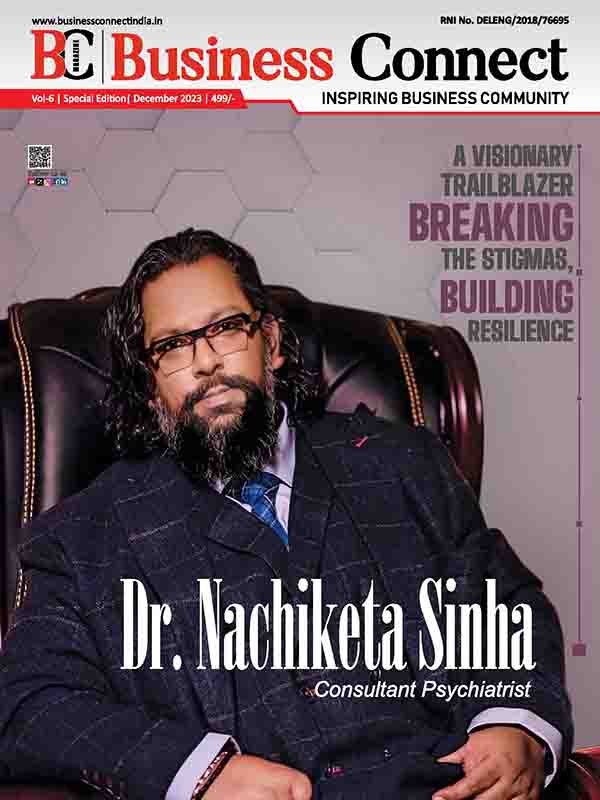ProcUrPal Private Limited
ProcUrPal Private Limited
Redefining Procurement with Innovation and Efficiency
In...
Today’s IPL Match 2024 | KKR Vs RR, Venue, And Timing
Today's IPL Match 2024 | KKR Vs RR, Venue,...
S K B Machine Tools: Breaking Glass Ceiling
S K B Machine Tools: Breaking Glass Ceiling
Machine Tools...
Fresh stories
Today: Browse our editor's hand picked articles!
1win – Your One-Stop Destination for Ultimate Online Gaming Experience
1win - Your One-Stop Destination for Ultimate Online Gaming...
Roulette in India in 2024: Development Forecasts & Impacts of Market Regulation
The future of roulette in India in 2024: development...
Stock Market Plunges: Iranian Missile Strike Impact
Stock Market Plunges: Iranian Missile Strike Impact
By: Geetanjali
After months...
Top 5 ways to earn money online by selling physical products
Top 5 ways to earn money online by selling...
SUT HOSPITAL PATTOM
SUT Hospital: A promise to prioritizing ‘care before commerce’…
Modern...
INSTABIZ SOLUTIONS INDIA PVT LTD
Instabiz Solutions India Pvt Ltd
The Manufacturing Maverick of Top-Quality...
MOST INSPIRING SUCCESS STORY OF TWITTER
MOST INSPIRING SUCCESS STORY OF TWITTER
Twitter is one of the largest and fastest-growing social networking service sites where people can share thoughts, news, advertisements,...
admin -
Most Promising Company To Watchout- 2024
GARUDA MART INDIA PVT. LTD.
GARUDA MART INDIA PVT. LTD.
A pioneering brand revolutionizing the...
News
Asian Development Bank Pins Down India’s GDP Growth At 7% For FY25.
Asian Development Bank Pins Down India's GDP Growth At...
Lounge interview
MoMAGIC Technologies Pvt. Ltd.
MoMAGIC Technologies Pvt. Ltd.
Pioneers in Mobile Advertising and IoT...
Popular
Innovative Business Leaders Of The Year 2024
ProcUrPal Private Limited
ProcUrPal Private Limited
Redefining Procurement with Innovation and Efficiency
In...
News
Today’s IPL Match 2024 | KKR Vs RR, Venue, And Timing
Today's IPL Match 2024 | KKR Vs RR, Venue,...
Lounge interview
S K B Machine Tools: Breaking Glass Ceiling
S K B Machine Tools: Breaking Glass Ceiling
Machine Tools...
Guest Posts
1win – Your One-Stop Destination for Ultimate Online Gaming Experience
1win - Your One-Stop Destination for Ultimate Online Gaming...
Guest Posts
Roulette in India in 2024: Development Forecasts & Impacts of Market Regulation
The future of roulette in India in 2024: development...
Company of The Year 2023
Transforming Spaces and Elevating Lives
FCI London
Transforming Spaces and Elevating Lives
The FCI London Journey...
JCasp Technologies Pvt. Ltd.
JCasp Technologies Pvt. Ltd.
Pioneering excellence in tech space…
Here comes...
CYBERGRID SOLUTIONS
CYBERGRID SOLUTIONS
Offering Impeccable Technology Solutions Since 2020
A research by...
Latest News
CelebrityLifestyle
ProcUrPal Private Limited
ProcUrPal Private Limited
Redefining Procurement with Innovation and Efficiency
In...
Today’s IPL Match 2024 | KKR Vs RR, Venue, And Timing
Today's IPL Match 2024 | KKR Vs RR, Venue,...
S K B Machine Tools: Breaking Glass Ceiling
S K B Machine Tools: Breaking Glass Ceiling
Machine Tools...
1win – Your One-Stop Destination for Ultimate Online Gaming Experience
1win - Your One-Stop Destination for Ultimate Online Gaming...
Roulette in India in 2024: Development Forecasts & Impacts of Market Regulation
The future of roulette in India in 2024: development...
Food & travel
ProcUrPal Private Limited
ProcUrPal Private Limited
Redefining Procurement with Innovation and Efficiency
In...
Today’s IPL Match 2024 | KKR Vs RR, Venue, And Timing
Today's IPL Match 2024 | KKR Vs RR, Venue,...
S K B Machine Tools: Breaking Glass Ceiling
S K B Machine Tools: Breaking Glass Ceiling
Machine Tools...
Exclusive content
Eassyserve
Eassyserve – The Services SuperApp
The World’s First e-commerce marketplace for services delivering over 20,000+ services across 100+ Indian cities.
Customers always face the challenge...
Innovative Business Leaders Of The Year 2024
ProcUrPal Private Limited
ProcUrPal Private Limited
Redefining Procurement with Innovation and Efficiency
In...
News
Today’s IPL Match 2024 | KKR Vs RR, Venue, And Timing
Today's IPL Match 2024 | KKR Vs RR, Venue,...
Lounge interview
S K B Machine Tools: Breaking Glass Ceiling
S K B Machine Tools: Breaking Glass Ceiling
Machine Tools...
Guest Posts
1win – Your One-Stop Destination for Ultimate Online Gaming Experience
1win - Your One-Stop Destination for Ultimate Online Gaming...
Recent postsLatest
Eassyserve
Eassyserve – The Services SuperApp
The World’s First e-commerce marketplace for services delivering over 20,000+ services across 100+ Indian cities.
Customers always face the challenge...
ProcUrPal Private Limited
ProcUrPal Private Limited
Redefining Procurement with Innovation and Efficiency
In...
Today’s IPL Match 2024 | KKR Vs RR, Venue, And Timing
Today's IPL Match 2024 | KKR Vs RR, Venue,...
S K B Machine Tools: Breaking Glass Ceiling
S K B Machine Tools: Breaking Glass Ceiling
Machine Tools...
1win – Your One-Stop Destination for Ultimate Online Gaming Experience
1win - Your One-Stop Destination for Ultimate Online Gaming...
Roulette in India in 2024: Development Forecasts & Impacts of Market Regulation
The future of roulette in India in 2024: development...
Stock Market Plunges: Iranian Missile Strike Impact
Stock Market Plunges: Iranian Missile Strike Impact
By: Geetanjali
After months...
Top 5 ways to earn money online by selling physical products
Top 5 ways to earn money online by selling...
SUT HOSPITAL PATTOM
SUT Hospital: A promise to prioritizing ‘care before commerce’…
Modern...
INSTABIZ SOLUTIONS INDIA PVT LTD
Instabiz Solutions India Pvt Ltd
The Manufacturing Maverick of Top-Quality...
Launchpad
Elon Musk Unveils Video of Tesla’s New Humanoid Robot—Showcases Dance Moves and Egg-Boiling Skills
Elon Musk Unveils Video of Tesla's New Humanoid Robot—Showcases...
Honor Launches Feature-Packed Honor 100 Series with 50-Megapixel Front Camera and Robust Battery
Honor Launches Feature-Packed Honor 100 Series with 50-Megapixel Front...
Tata Punch CNG Launches at ₹7.10 Lakh, Comes with a Sunroof
Tata Punch CNG Launches at Rs.7.10 Lakh, Comes with...
Realme C53: The Affordable 108MP Camera Phone with Unisoc T612 Chipset, Priced Under Rs 10,000!
Realme C53: The Affordable 108MP Camera Phone with Unisoc...
JioBook Laptop Launch Date Revealed via Amazon Teaser
JioBook Laptop Launch Date Revealed via Amazon Teaser
Written by...
Business Connect is a best business magazine whose name is derived from Business Community which connects entrepreneurs, executive officers and VCs.


